
08/18/25 UPDATE: This review has been updated with instrumented test results.
Porsche invited us to drive the improved 2025 Porsche Taycan GTS Sport Turismo EV over the manifold curvy roads of Georgia, probably hoping we would leave impressed enough to reiterate all that we've learned. Like mentioning its 690 horsepower, its improved max charge rate of 320 kilowatts, or doing something as foolish as speculating how much the automaker has improved upon the previous model's 233-mile range. Well, they almost had us. We nearly did it. Instead, we must begin by pointing out a major flaw in their plan: They let us drive a manual-transmission 911 that same morning.
The two couldn't be more different. The latest lightweight 911 Carrera T is a subtle refresh of our favorite sports car where gears are selected via a wooden shift knob atop a six-speed manual. The Taycan GTS Sport Turismo is an all-wheel-drive electric station wagon carrying more mass than a Toyota Grand Highlander Hybrid Max. Putting the EV into Drive requires the same range of motion as flipping on a porch light. A liquid-burning twin-turbo 3.0-liter flat-six powers the 911's rear wheels, while the Taycan's front and rear electric motors eschew bore and stroke for rare-earth magnets and copper hairpin windings.
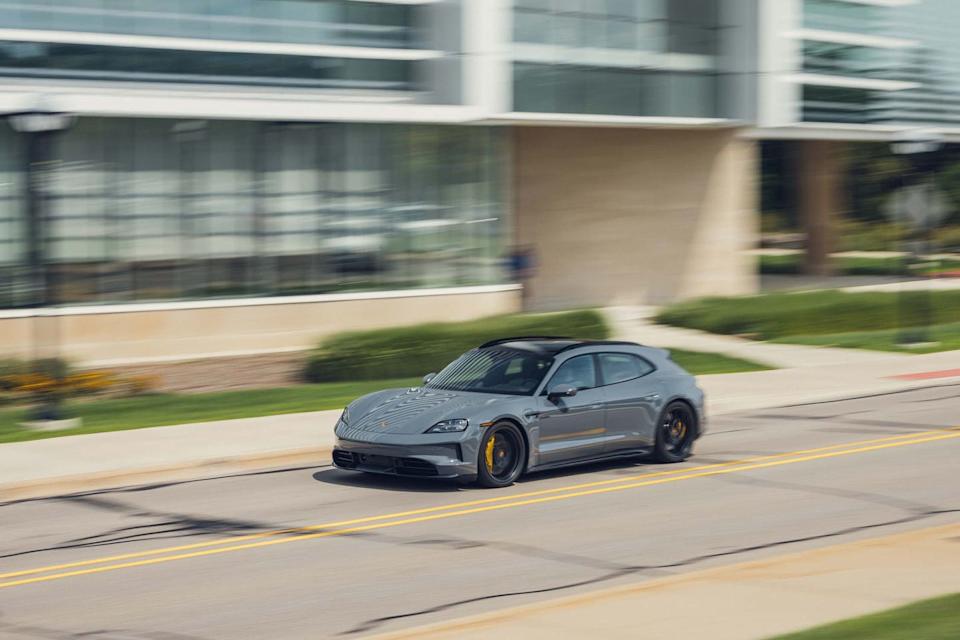
It should come as no surprise that the Neunelfer and Taycan covered the same asphalt in completely different ways. In the 911, blasting over an unfamiliar road was as easy as keeping your eyes on the lookout for police and cyclists. You can get going pretty quickly, but the 911's long gearing means committing lots of time—and footwork—to ever enter fourth gear. You end up shifting out of pure indulgence rather than necessity.
But in the refreshed Taycan GTS Sport Turismo, there is simply more of everything—except, of course, shifting. There's always at least 596 horsepower and 534 pound-feet of torque at your toes, and it kicks in with the immediacy of a mouse click. Suddenly, you've found enough space to pass a row of cars instead of just one or two of the typical slowpokes. Before you know it, you're heavy on the brakes behind a Lumpkin County Sheriff cruiser. To the Taycan's credit, they'll never hear you coming.
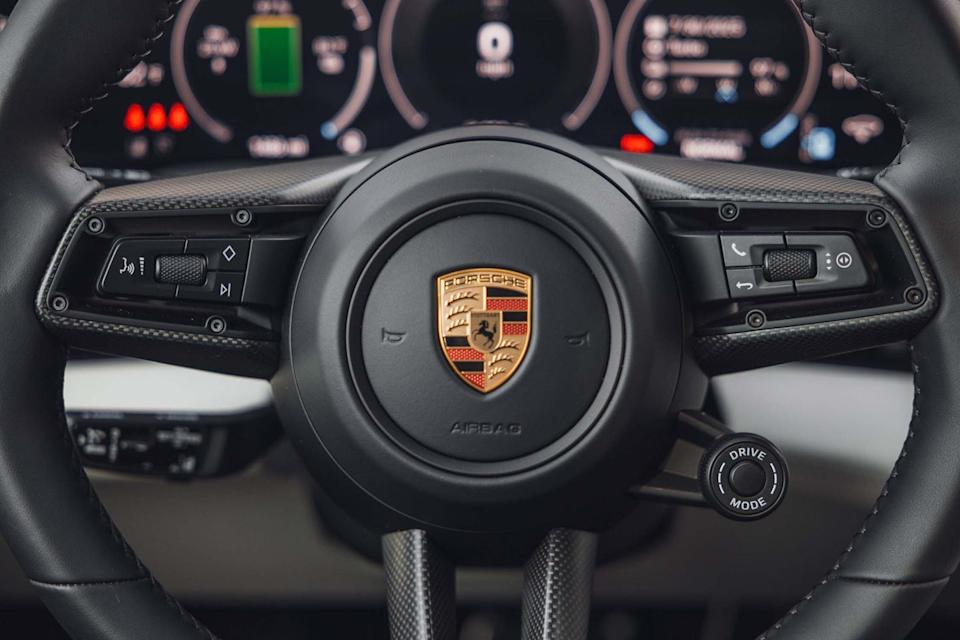
Should you find this motivation insufficient, a little push-to-pass button on the steering wheel engages an overboost function, temporarily bumping output to 690 horses and 582 pound-feet (gains of 94 and 48, respectively). It worked as effectively as a well-timed jump scare in a horror movie, hitting unwitting passengers with a body-contorting surprise. It's completely unnecessary and yet so, so fun.
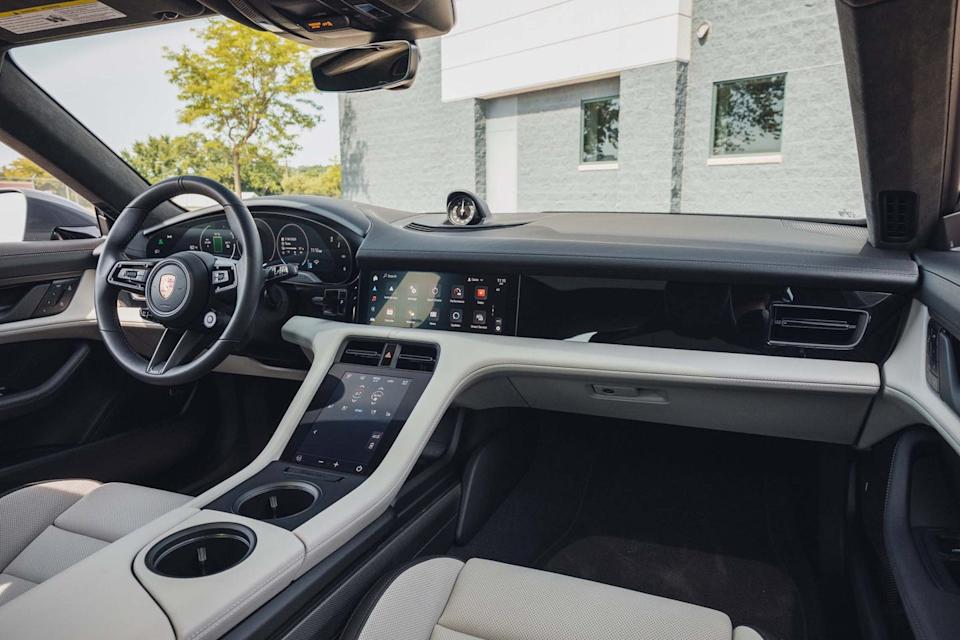
Launch control also summons all of the power. At our test track, the Taycan GTS Sport Turismo blew its manufacturer estimates out of the water. It hit 60 mph in 2.8 seconds, reached 100 mph in 6.5 seconds, and crossed the quarter-mile mark at 130 mph in 10.8 seconds. Compare those numbers to the 2025 Taycan Turbo Cross Turismo we recently tested, and the GTS is 0.3 and 0.6 second behind the Turbo Cross Turismo's 60 and quarter-mile times. A solid showing for the GTS, considering its starting price is nearly $27,000 less than the quicker Turbo.
Driving the Taycan GTS Sport Turismo is like reliving our experience with the 911 Carrera T in fast-forward. The straightaways feel shorter. The hairpins arrive sooner. Thanks to all that torque, the GTS always finds the room to pass before lanes merge or oncoming traffic appears. Like in the 911, squirreling the GTS wagon through tighter corners returns nothing but smiles and poise, and the Taycan's missing exhaust note only enhances the dramatics when the Pirelli P Zero PZ4 Elect summer rubber begins to cry under duress. The optional Porsche Active Ride dampers ($7150) hide the car's mass well.
There's still no one-pedal driving, meaning the car won't decelerate to a stop by lifting off the accelerator, but the Taycan continues to offer a recuperation mode that Porsche says is now powerful enough to regenerate up to 400 kilowatts at roughly 0.50 g. That's a big upgrade over the previous max rate of 265 kilowatts at 0.30 g. Porsche may claim it's more efficient to coast than it is to rely on regen (until the braking gets heavy, at least), but we still believe the driver should be allowed the final say.
The GTS Sport Turismo we tested came equipped with the optional Porsche Ceramic Composite Brakes ($9070). The 5248-pound GTS test car stopped from 70 mph in 156 feet, which is about average for the Taycan lineup—at least until reaching the realm of the high-po Turbo GT. It took 309 feet to stop from 100 mph, which is a notable advantage over 4 and 4S Cross Turismos we've tested, both of which came to a stop in the 320-foot range. Porsche armchair warriors might be quick to point out that this GTS stopped about as quickly as the Lucid Air Sapphire we tested, but the latter was wearing Michelin Pilot Sport 4S tires.
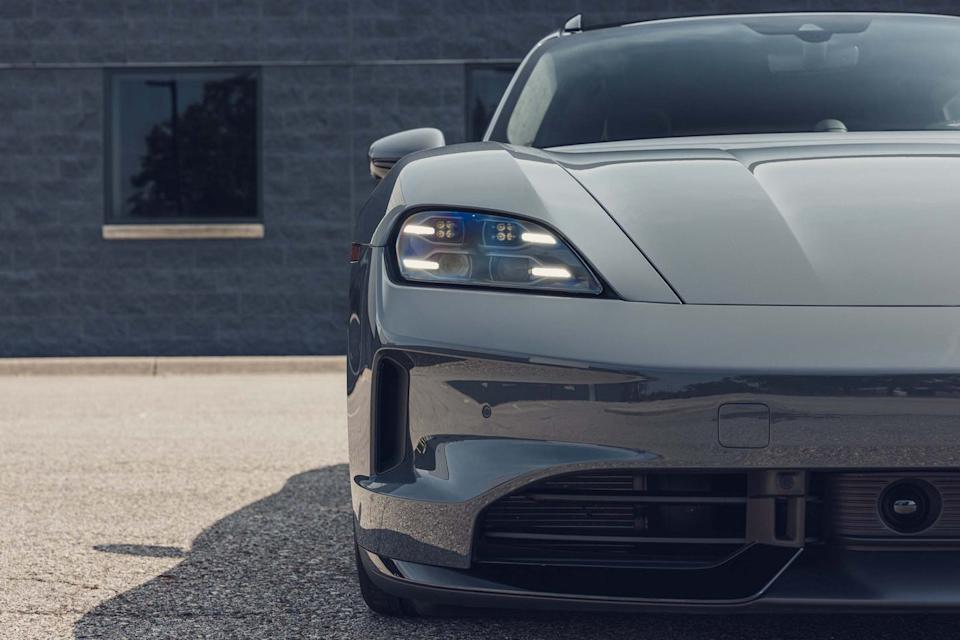
During our real-world 75-mph highway range test, the GTS Sport Turismo achieved 280 miles of driving range, beating its EPA estimate by a single mile. Strangely, that's only 10 miles farther than the 1019-hp Turbo GT could muster. We didn't charge this car, but similar Taycanscan do 10 to 90 percent on a DC fast-charger in 24 minutes.
Taycans across the lineup carry battery packs with a higher nickel content than before, and Porsche cites the chemistry difference as the reason why capacity rose while weight did not. The GTS Sport Turismo is sold exclusively with the new 97-kWh Performance Plus battery, although there's no longer the option of a 19.2-kW onboard charger over the standard 11.0-kW unit. However, that news is likely only disappointing to previous Taycan owners who have installed the $1670 Porsche Wall Charger Connect at home, one of only a few Level 2 chargers capable of 19.2-kW charging.
The 2025 Taycan GTS Sport Turismo carries a starting price of $151,795, while the sedan starts at $149,895. The previous GTS Sport Turismo started at $142,850, but just like an iPhone, new tech will always seek to squeeze your wallet just a bit harder.
Maybe putting us in the 911 wasn't a mistake after all. Maybe it was bravery. Maybe Porsche did it to prove a point, because both cars are capable of rewarding a quick blast of spirited driving as suddenly as you can hit the right pedal. Even when positioned against a purist classic like the manual 911 Carrera T, the Taycan GTS Sport Turismo proves a point we've been making for a long time: Great cars deliver on a pleasurable driving experience, even while in the company of other greats.
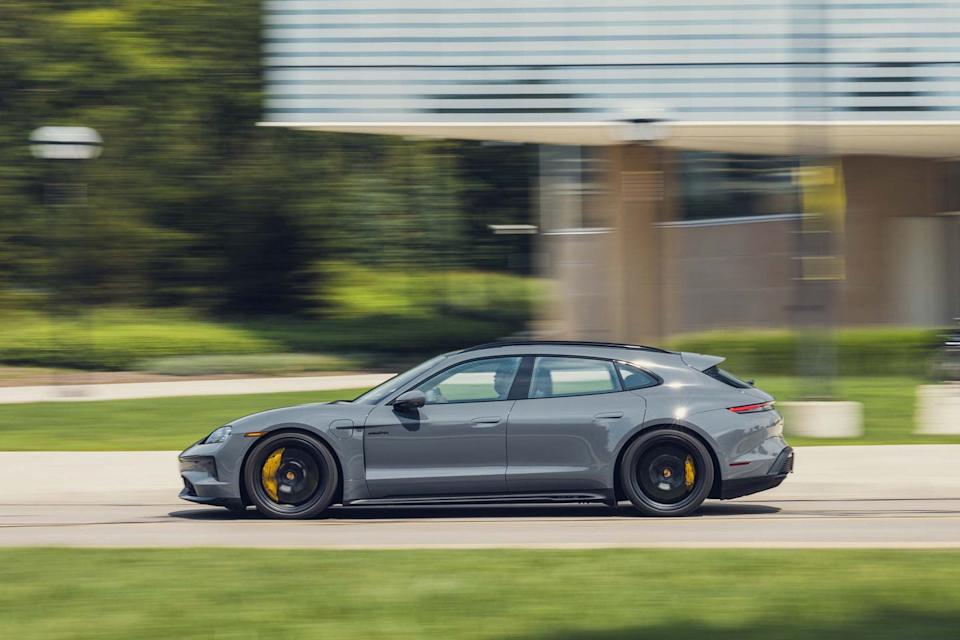
You Might Also Like
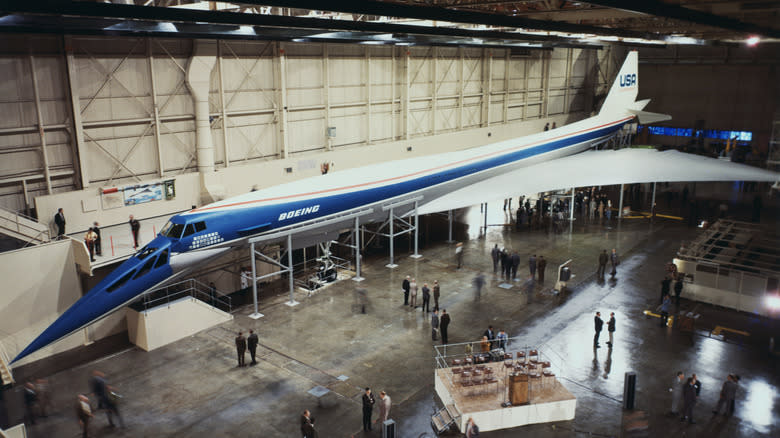
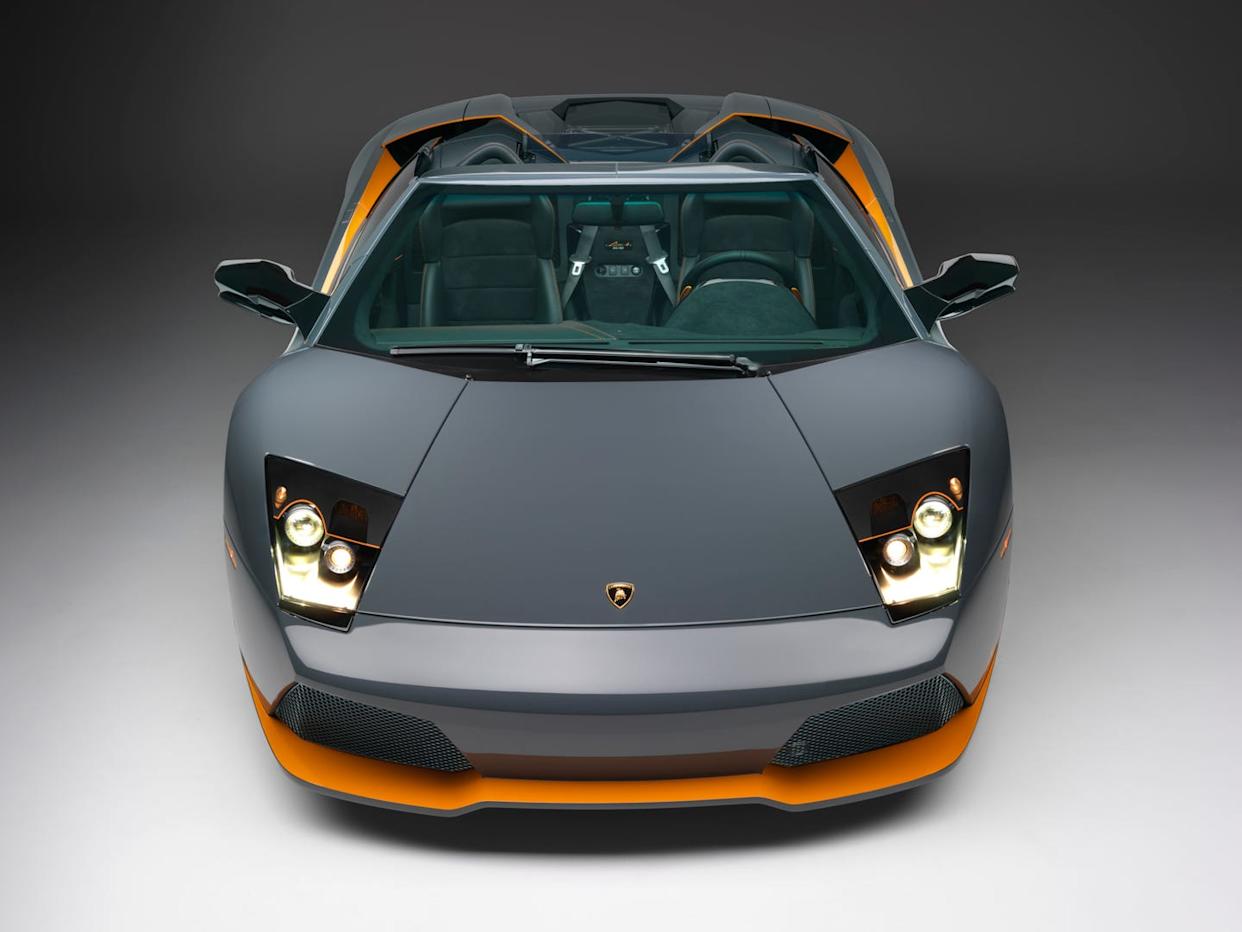

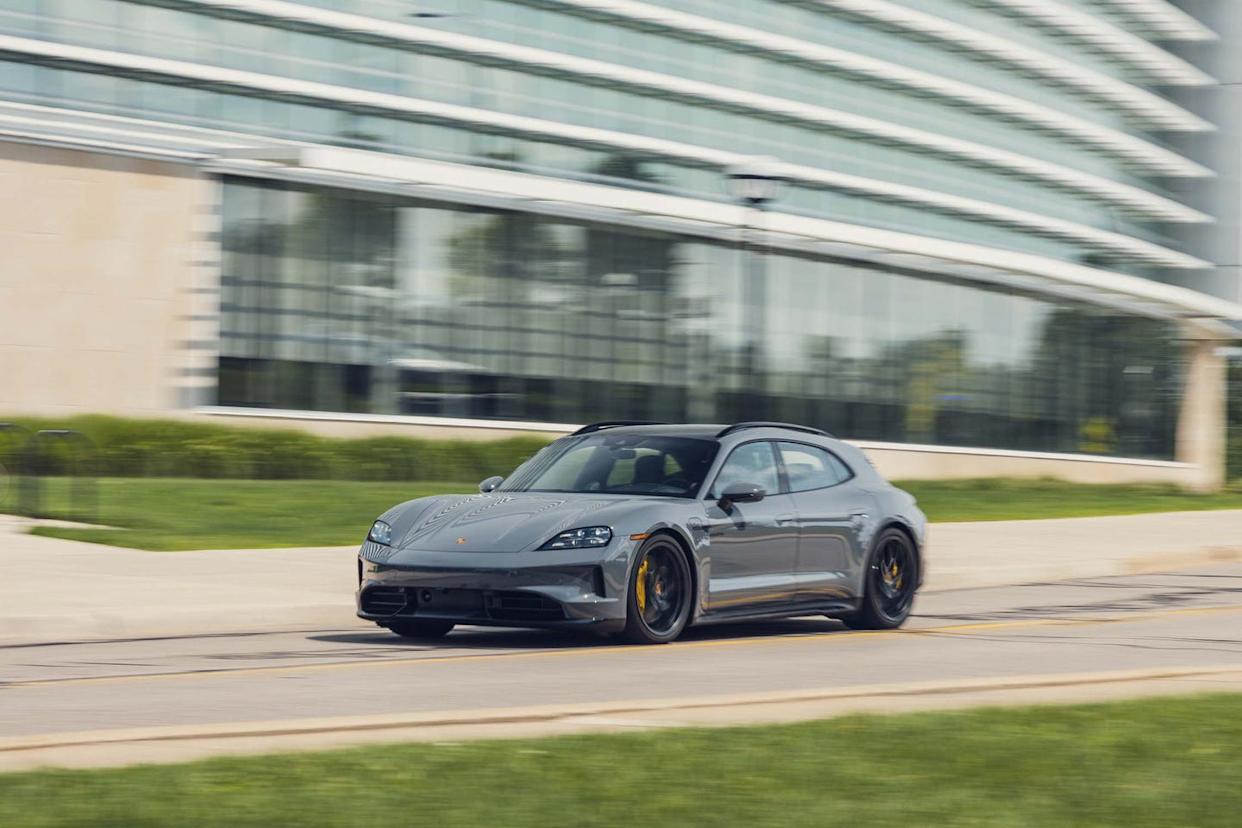



Comments